
Leonardo di ser Piero da Vinci was an Italian polymath of the High Renaissance who was active as a painter, draughtsman, engineer, scientist, theorist, sculptor, and architect. While his fame initially rested on his achievements as a painter, he also became known for his notebooks, in which he made drawings and notes on a variety of subjects, including anatomy, astronomy, botany, cartography, painting, and paleontology. Leonardo is widely regarded to have been a genius who epitomized the Renaissance humanist ideal, and his collective works comprise a contribution to later generations of artists matched only by that of his younger contemporary by 23 years Michelangelo Buonarroti.
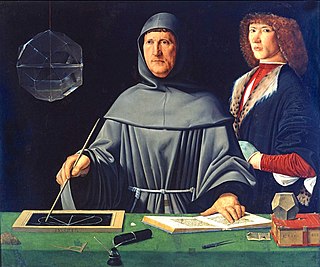
Fra. Luca Bartolomeo de Pacioli was an Italian mathematician, Franciscan friar, collaborator with Leonardo da Vinci, and an early contributor to the field now known as accounting. He is referred to as the father of accounting and bookkeeping and he was the first person to publish a work on the double-entry system of book-keeping on the continent. He was also called Luca di Borgo after his birthplace, Borgo Sansepolcro, Tuscany.

The Uffizi Gallery is a prominent art museum located adjacent to the Piazza della Signoria in the Historic Centre of Florence in the region of Tuscany, Italy. One of the most important Italian museums and the most visited, it is also one of the largest and best-known in the world and holds a collection of priceless works, particularly from the period of the Italian Renaissance.

Vinci is a comune of the Metropolitan City of Florence in the Italian region of Tuscany. The birthplace of Renaissance polymath Leonardo da Vinci lies just outside the town.

Lisa del Giocondo was an Italian noblewoman and member of the Gherardini family of Florence and Tuscany. Her name was given to the Mona Lisa, her portrait commissioned by her husband and painted by Leonardo da Vinci in the Italian Renaissance.

Anghiari is a hill town and municipality (comune) in the Province of Arezzo, Tuscany, Italy.

Calenzano is a comune (municipality) in the Metropolitan City of Florence in the Italian region Tuscany, located about 11 kilometres (7 mi) northwest of Florence. As of 31 December 2004, it had a population of 15,557 and an area of 76.9 square kilometres (29.7 sq mi).
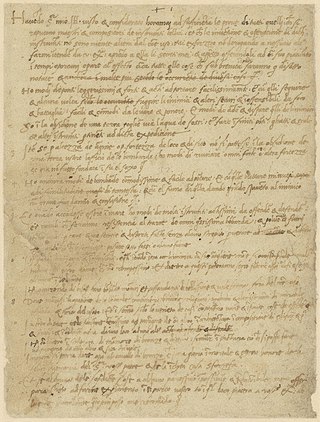
The Italian polymath Leonardo da Vinci (1452–1519) left thousands of pages of writings and drawings, but rarely made any references to his personal life. The resulting uncertainty, combined with mythologized anecdotes from his lifetime, has resulted in much speculation and interest in Leonardo's personal life. Particularly, his personal relationships, philosophy, religion, vegetarianism, left-handedness and appearance.

Pierino da Vinci, born Pier Francesco di Bartolomeo di Ser Piero da Vinci, was an Italian sculptor, born in the small town of Vinci in Tuscany; he was the nephew of Leonardo da Vinci.

Renato Castellani was an Italian film director and screenwriter.
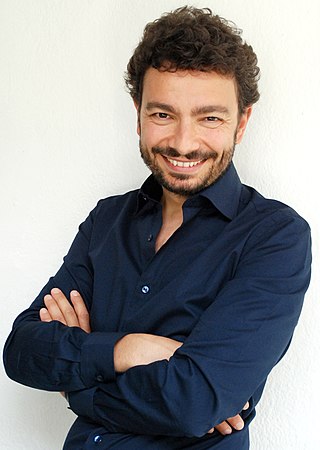
Massimo Polidoro is an Italian psychologist, writer, journalist, television personality, and co-founder and executive director of the Italian Committee for the Investigation of Claims of the Pseudosciences (CICAP).

The Portrait of Luca Pacioli is a painting attributed to the Italian Renaissance artist Jacopo de' Barbari, dating to around 1500 and housed in the Capodimonte Museum, Naples, southern Italy. The painting portrays the Renaissance mathematician Luca Pacioli and may have been painted by his collaborator Leonardo da Vinci. The person on the right has not been identified conclusively, but could be the German painter Albrecht Dürer, whom Barbari met between 1495 and 1500.
Alessandro Vezzosi is an Italian art critic, Leonardo scholar, artist, expert on interdisciplinary studies and creative museology, he is also the author of hundreds of exhibits, publications and conferences, in Italy and abroad on Leonardo da Vinci and the Renaissance, contemporary art and design. Amongst others, he was the first scholar from the Armand Hammer Centre for Leonardo Studies from the University of California in Los Angeles (1981), directed by Carlo Pedretti; he taught at the University of Progetto in Reggio Emilia; and he is honorary professor at the Accademia delle Arti del Disegno of Florence. He began as an artist from 1964 to 1971 winning more than 80 prizes in painting competitions. In the Seventies he was the founder of the "Archivio Leonardisimi" and of Strumenti-Memoria del Territorio; he coordinated "ArteCronaca", he was the historical-artistic consultant of the Municipality of Vinci and he collaborated on the publications on Tuscany and Leonardo, modern and contemporary art. In 1980 he curated the Centro di Documentazione Arti Visive of the Municipality of Florence.
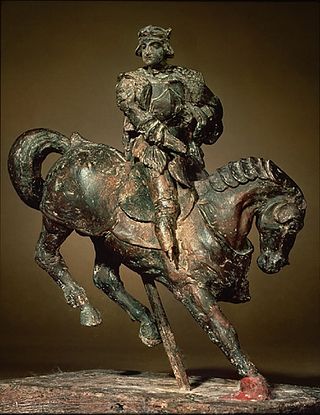
Horse and Rider is a beeswax sculpture depicting a rider on a horse. The history of the sculpture is unknown before the 20th century. The work has been attributed to Leonardo da Vinci by the Italian art historian Carlo Pedretti, though most historians have ignored or denied the attribution. A number of casts have been made, using a mold taken from the wax original.
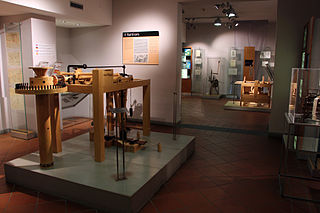
The Museo Ideale Leonardo da Vinci is located in Vinci, Leonardo da Vinci's birthplace, in the province of Florence, Italy. It is part of the Museo leonardiano di Vinci.

The Sala delle Asse, is a large room in the Castello Sforzesco in Milan, the location of a painting in tempera on plaster by Leonardo da Vinci, dating from about 1498. Its walls and vaulted ceiling are decorated with "intertwining plants with fruits and monochromes of roots and rocks" and a canopy created by sixteen trees.

The Metropolitan City of Florence is an administrative division called metropolitan city in the Tuscany region, Italy. Its capital is the city of Florence. It replaced the Province of Florence. It was first created by the reform of local authorities and then established by the Law 56/2014. It has been operative since 1 January 2015.

The Madonna and Child with the Infant Saint John the Baptist is a lost composition by Leonardo da Vinci. The composition is known through a handful of paintings attributed to artists in Leonardo's circle. An original underdrawing by Leonardo may be preserved in a version in a private collection in Moscow, Russia.

Leonardo is a historical drama created by Frank Spotnitz and Steve Thompson. The series was produced by Italian Lux Vide in collaboration with Rai Fiction, Sony Pictures Entertainment, with Frank Spotnitz's Big Light Productions and Freddie Highmore's Alfresco Pictures in association with France Télévisions and RTVE.

The Da Vinci family is an Italian family from Vinci, Tuscany.



















